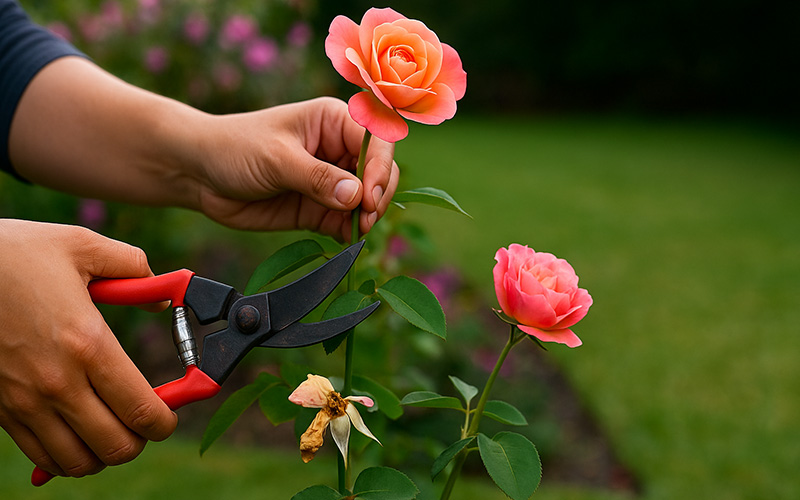A Simple Gardening Practice That Delivers Big Rewards
If you’ve ever looked at your rose bush after its first glorious flush of flowers and wondered why it suddenly seems to slow down, you’re not alone. Many gardeners don’t realize that simply removing old blooms—known as deadheading—can significantly extend the blooming season and encourage your rose to keep producing flowers well into fall.
Whether you’re growing Hybrid Tea Roses, floribundas, or shrub varieties, deadheading is a simple but highly effective way to boost bloom production, improve plant appearance, and help your garden thrive.
Why Deadheading Works
Once a rose bloom fades, the plant naturally shifts its energy into producing seeds (called rose hips) as part of its reproductive cycle. But when you remove the spent flower before seed development, the plant instead redirects its energy into creating new blooms.
This process is especially important for repeat-blooming roses. By regularly removing old flowers, you can keep your rose bush actively flowering through much of the growing season.
How to Deadhead Roses in 3 Easy Steps
1. Identify Spent Blooms
Watch for roses that are starting to fade, droop, or drop petals. Once the flower looks past its prime, it’s ready to be deadheaded.
2. Cut Back to a 5-Leaflet Leaf
Follow the bloom’s stem downward until you reach a leaflet with five leaflets (as opposed to the smaller, three-leaflet sets found higher up). Make your cut just above that point—this is where a strong new shoot is most likely to emerge.
-
Use sharp, clean pruning shears.
-
Cut at a 45-degree angle, sloping away from the bud eye (the small bump just above the leaf).
3. Remove Debris
Dispose of all the pruned blooms and leaves. Avoid letting old petals or stems accumulate at the base of your plant, as they can harbor disease or pests.
Extra Tips for Success
-
Time It Right: Don’t wait too long. The sooner you deadhead a spent flower, the faster the plant responds with new growth.
-
Keep Your Tools Clean: Disinfect pruners regularly to prevent spreading disease.
-
Don’t Deadhead Once-Blooming Roses: Some heirloom or wild roses bloom just once in early summer. For these, deadheading won’t spur more flowers but may improve appearance.
Results You Can See
With regular deadheading—every week or two—you’ll notice your rose bush staying tidier, healthier, and most importantly, blooming more often. It’s a small task that pays off in a big way, especially if you love bringing fresh-cut roses indoors or enjoy a vibrant garden through late summer.
Deadheading is more than pruning—it’s a form of garden mindfulness. A few minutes spent removing faded blooms each week can lead to months of colorful, fragrant reward.
So grab your shears, head outside, and give your roses the attention they deserve. More blooms are just a few snips away.
